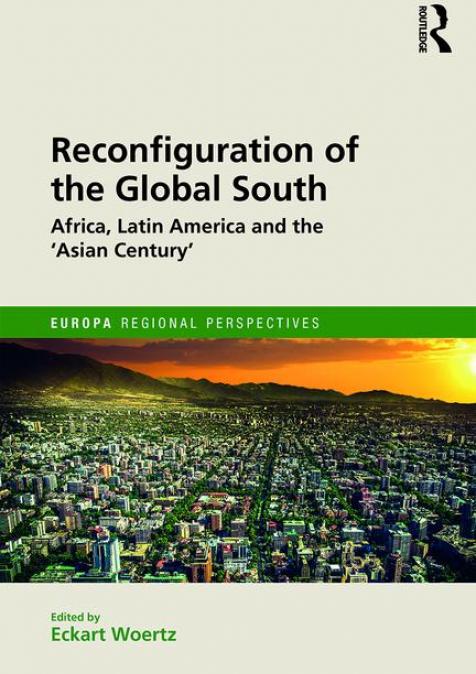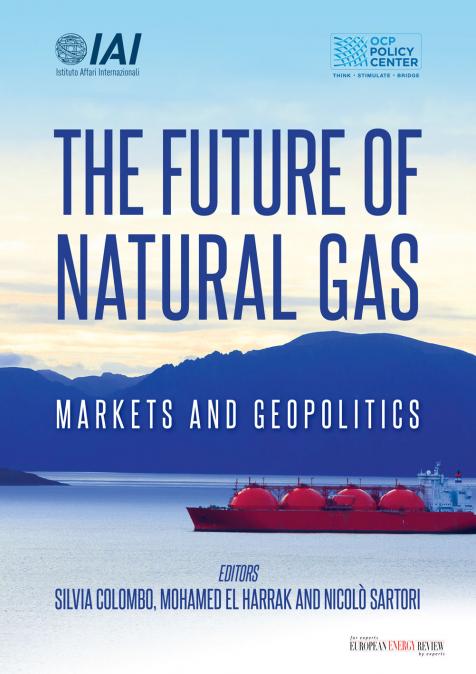Publications /
Opinion
The Law of Self-Suffering
Mahatma Gandhi, born 1869, assassinated 1948, demonstrated in his struggle for the independence of his native India (resisting British colonial arrogance), that passive resistance had a chance, despite being insulted by British statesman Winston Churchill as the “Hindu Mussolini”. Gandhi, a physically fragile man of just about 50 kilograms, dressed in white cloth (a white shawl and dhoti, allegedly woven by himself), and was, and forever is, the ‘bapu’ of his nation, the father figure, remembered as a genial pacifist, whose legacy has been overshadowed by eternal wars, nuclear threats, and genocides.
The unquestionable grandeur of Gandhi was not limited to his confrontation with servants of the British crown in India. His spirit and method of non-violent resistance and peaceful disobedience was finetuned by Gandhi in another British colony, South Africa, ruled through oppression and apartheid. In 1893, aged 23, Gandhi sailed into the unknown and remained on and off for 21 years in South Africa. Gandhi experimented with his nonviolent philosophy, named ‘satyagraha’ (clinging to truth) in South Africa, insisting on civil rights and equality for his fellow countrymen and continued to practice is philosophy on his return until New Delhi celebrated independence in 1947.
The first Indians arrived during the Dutch colonial era, as slaves, in 1664. A conservative estimate, based on records, show that 16300 slaves from the Indian subcontinent have been brought to the Cape. In 1860, on two boats, one from Madras, the other from Calcutta, reached South Africa, with 342 indentured workers on board. Many Indians, in later decades, were slaving on the construction of the Kenya-Uganda railways, many workers were Sikhs from Punjab, and thousands died during the construction work. About three million Indians settled in 14 African territories and colonies, including Mauritius (882 000), Réunion (220 000), Kenya (110 000), Uganda (50 000), Mozambique (70 000), Tanzania (80 000), and Madagascar (25000).
Indian migrants settling in South Africa suffered racism and inhuman working conditions. It remains the African nation with most inhabitants of Indian descent, many of them living in Durban. Indians were not allowed to walk on public footpaths, and were forbidden to sit next to Europeans in stagecoaches, which Gandhi resisted when told to sit on the floor. He was beaten bloody, spat upon, yet, the Indian lawyer refused to react, insisting instead on his rights. Over the years of assuming political leadership of Indians in South Africa, the pacifist was sentenced several times to hard labor, but remained totally unmoved, trusting in satyagraha, the law of self-suffering. His law.
After his assassination in India by a militant Hindu nationalist, Gandhi’s body was (in accordance with Hindu traditions) cremated and his ashes scattered throughout many parts of the globe, including at the source of the Nile River near Jinja, in Uganda. “The sacred warrior”, as Nelson Mandela named the rebel with a cause, was in life, but in particular after death, glorified by his followers, reaching divine proportions. His last departure from South Africa for India, January 9, 1915, is unsurprisingly commemorated as the Pravasi Bharatiya Divas, the nonresident day, a reminder of the contributions of overseas Indians to the country’s development.
Harsh Pant, Director of the Strategic Studies Program at the Observer Research Foundation in New Delhi, and Professor of International Relations at King’s College, London, wrote in “African Business” that policymakers “previously relied on the historical narrative as a starting point, but what happened over time is that generations and ambitions changed.” While this narrative, for example the glorification of figures like Nehru or Gandhi, is “still symbolically powerful”, argues Pant, “the main ambition at this point is to make the relationship between India and Africa more suited to 21st Century realities” (African Business, October 20, 2023). Harry Clynch, finance reporter for African Business insisted that India’s ties with Africa are rooted in an emotional shared history, but as India sets its sights on becoming the century’s superpower, “trade, business links and the reshaping of international institutions will take center stage in the relationship.”
Sentiment of Inclusiveness
At the start of the G20 summit in New Delhi in September 2023, Clynch wrote, Indian prime minister Narendra Modi began proceedings with an announcement “that reveals the importance the Indian government is placing on relationships with Africa”. Declaring India’s G20 presidency a “symbol of inclusion”, Modi proclaimed that “with this sentiment of inclusiveness”, Bharat (Modi’s preferred name for India) believed that the African Union should be given permanent membership of the G20. India and Africa, concluded African Business, have enjoyed warm political relationships since the birth of India as an independent state in 1947.
“However, there are increasing signs that the government in New Delhi is now seeking to leverage these relations more proactively to advance a broad range of economic and geopolitical interests that are central to Modi’s mission to make India one of this century’s superpowers.” Prior to the G20 summit, the Indian prime minister “explicitly cited the intertwined history between India and Africa and explained how he sees this as the basis of any future relationship”, African Business reported:
“When we use the term “Global South” it is not just a diplomatic term,’ Modi said. ‘In our shared history, we have together opposed colonialism and apartheid. It was on the soil of Africa that Mahatma Gandhi used powerful methods of nonviolent and peaceful resistance. It is on this strong foundation of history that we are shaping our modern relations”.
Professor Pant suggested that a central focus on this modernization process in New Delhi is the economic potential offered by many African markets. Trade between India and sub-Saharan Africa has been growing annually since 2003, steadily rising to $103 billion in 2023, as confirmed by the “Africa Center” (December 12, 2023). India is Africa’s third largest trading partner and its trade with African nations has grown 18% per year over the last 20 years.
The African Union, reported Harry Clynch, is now India’s fourth largest trading partner after the United States, China, and the United Arab Emirates. Energy, said Clynch, is “a crucial part of this picture”. New Delhi is the single biggest purchaser of Nigerian crude oil, with Africans supplying around a quarter of India’s total crude imports. On September 6, 2023, a group of Indian companies pledged to invest $14 billion US dollars in Nigeria, across a range of sectors from steel to renewable energy. Indorama plans to invest eight billion to expand its petrochemical facility in the West African nation.
Africa is the second largest recipient of all credit extended by India. The Confederation of Indian Industry, reported “adf” in January of this year, wants to increase India’s economic footprint in Africa to $150 billion by 2030.India’s Export-Import Bank earmarks half of its international funding, technical aid and and trade for Africa. In 2017 the Observer Research Foundation, in New Delhi and the Policy Center for the New South published an extensive analytical study (Securing the 21st Century. Mapping India-Africa Engagement) that stated: “as India and Africa become the most populous region of the world, their economies also gather momentum”. And: “We believe that the template for a secure and equitable 21st Century will be written in developing Asia and Africa over the next two decades”.
Strategic Move
The Policy Center for the New South has continuously observed and analyzed the development of African-Indian relations in Policy Briefs and Papers, including the ‘Rationale behind India’s shift to Africa’, and ‘North Africa’s Invisible Partner Exploring India’s Political and Economic Influence in the Region’. The authors examined in their above-mentioned Policy Paper India’s growing engagement in North Africa, focusing on Morocco, Algeria, Tunisia, Libya, and Egypt. The authors concluded “through its strategic moves in North Africa, India has established a powerful southern-west axis for its foreign policy that stretches from Iran to Morocco, enabling it to effectively cover the entire southern Mediterranean region.”
India’s first prime minister Jawaharlal Nehru, termed Africa “India’s sister continent”. Since the 1960’s, noted the African Center for Strategic Studies (December 12, 2023), India’s prime ministers have visited Africa 76 times, “a level of engagement unmatched by Africa’s other external partners.” Between 2015 and 2022, New Delhi received over 100 African leaders, while each African nation has received at least an Indian cabinet minister.
Since independence, wrote Paul Nantulya in his article ‘Africa-India cooperation sets benchmarks for partnership’, published by the “African Center for Strategic Studies” (December 12, 2023), India has “believed it was destined to be a Great Power, meaning a self-reliant and economically and militarily powerful India with respect and influence. These ambitions remain anchored in Africa”. Abhishek Mishra, an associate fellow at the Manohar Parrikar Institute for Defense Studies and Analyses, says that India’s global ambitions rest on south-south cooperation, which hinges on an “ascendant India and resurgent Africa”. Thus “the thrust of India’s Africa policy is to develop together as equals” (Africa Center for Strategic Studies). “Why India must put Africa at the heart of its global south vision”, asked a headline in the Indian Express (March 30, 2024). The brief answer: first, the potential for economic partnership is immense; second: “Africa’s influence in global forums will be important for India’s vision of global governance”. The Global South, reminds the Indian Express, “houses three fourths of humanity and 39 percent of the global GDP”.









